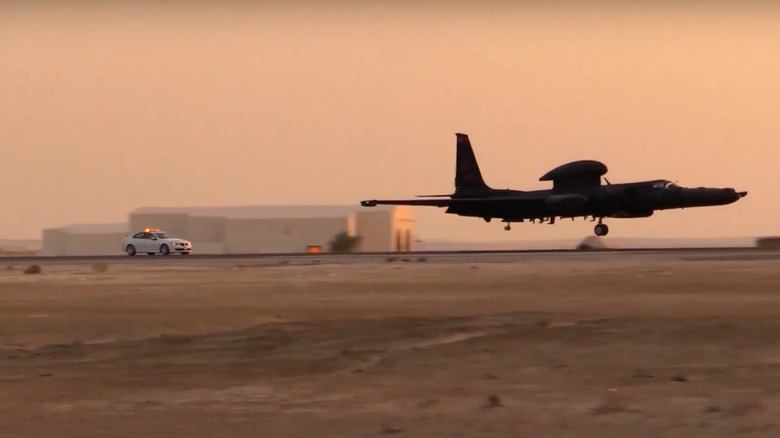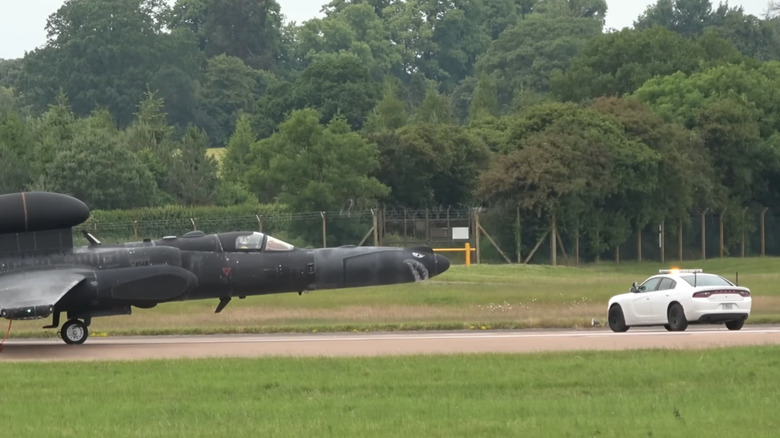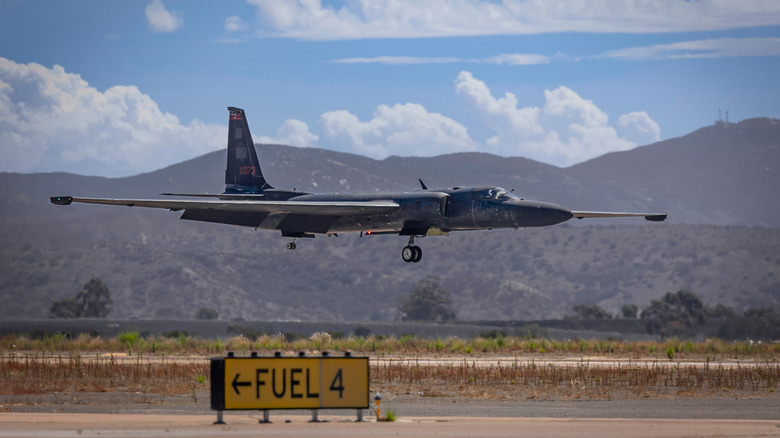Chase Cars: The Legends Of The US Military's U-2 Spy Plane
The U-2 Dragon Lady, one of the most famous warplanes in history, isn't just hard to fly; it's brutal to land as well. Designed to soar at 70,000 feet and gather intelligence from miles above, the aircraft sacrifices nearly all landing visibility and stability for high-altitude performance. Its glider-like wings generate enormous lift aloft, but it balances on a narrow bicycle-style landing gear when on the ground. That makes the final approach and touchdown a delicate process, since the pilot can't see the runway clearly and has to time the touchdown within a few feet of the ground. Too soon, and sensors can snap. Too late, and the jet risks overshooting the runway. That's where the chase car comes in.
A second U-2 pilot follows directly behind the plane, speeding down the runway at more than 100 mph, calling out altitude readings and angle corrections in real-time over radio. Without that guidance, landings would be far more dangerous. The chase car also helps once the aircraft comes to a stop, coordinating the crew that rushes in to install pogo supports under the wings. After long missions in a cramped pressure suit with limited visibility, the U-2 pilot relies on the support from the chase car to keep the landing safe.
A muscle car lineup built for speed and precision
The U.S. Air Force didn't choose just any car to chase the Dragon Lady. From the start, it needed speed. In the late 1950s, Ford Country Squire station wagons (heavily modified with supercharged engines) were the first to do the job. They weren't elegant, but they were fast and big enough to carry tools and pogo gear. Soon after, the job went to the Chevrolet El Camino, which ruled the runway for nearly two decades. These hot-rodded hybrids pushed up to 450 horsepower and could drive directly under the U-2's wings to help stabilize them after landing.
In the 1980s, the Air Force needed something new. The California Highway Patrol suggested its Fox Body Mustangs, already equipped with radios and tuned for pursuit. They were lighter and more agile than the El Caminos. Then came the 1990s Z28 Camaro with the police package and a 5.7L V8 — quick, aggressive, and suited for the job. In the 2000s, Pontiacs stepped in, including the GTO and G8, but they've since aged out.
Today, the chase fleet includes Dodge Chargers, Challengers, Camaros, and even Teslas. But no matter the model, one rule stays the same: the driver is a U-2 pilot, just as qualified as the one in the air. At landing speeds of 140 mph, nothing less than top-tier coordination will cut it.
The end of an era — or a new one starting?
The U-2 is aging, and with it, the chase car program faces an uncertain future. The Air Force is expected to retire the U-2 by 2026, and that could take its signature landing support system with it. But the job isn't over yet. U-2s are still flying missions (and there's a reason why the USAF keeps them flying), often using the same cars and pilots to bring them home safely. Moving these chase vehicles around the world is a task in itself. Transporting them overseas requires special certification from the Air Transportability Test Loading Agency (ATTLA), and sometimes the vehicles are deemed too difficult to fly and have to be shipped by sea.
There's also a new player on the scene: the RQ-4A Global Hawk drone. Though it's uncrewed, it shares one of the U-2's flaws: poor visibility during landing. Some squadrons have already begun using chase cars to help guide these drones down safely, just as they've done with the Dragon Lady for decades.
Whether it's the end or a handoff to the next generation, the legacy is intact. Chase cars have never gotten the spotlight, but they've been critical to one of the most elite and demanding flight programs in U.S. history. Without them, the Dragon Lady wouldn't have flown as far, or landed nearly as safely.


